In general, entertainment forms an integrated part of Japanese culture, just think of all the karaoke parlours, manga or anime places, game centres and more. Another highly popular form of entertainment integrated in Japanese culture is kabuki. You may envision the visual image of a man dressed up in traditional looking clothes, wearing a lot of make-up, dancing to rhythmic music during a theater show. That is, in short, what kabuki is about. But there is much more to tell about this traditional theatre dance, which is also designated as UNESCO World Heritage. In this article we will give you some background information and explain how to witness this form of entertainment yourself!
What is kabuki?
Kabuki is a rich blend of music, dance and mime, spectacular staging and costuming. The play involves several set elements including particular rhythmic music, make-up known as kumadori, costumes and most remarkably, the exaggerated actions performed by the actors. The poses and movements of the actors are of great importance for the public to understand the play, the spoken old-fashioned Japanese is difficult to understand, even for the Japanese!
The origin of kabuki
The traditional Japanese form of performance art originated in the Edo period. Originally it was performed by both women and men, but present day only male actors perform the plays. However, it is said that a woman called Izumo no Okuni, began performing in the 1600’s in Kyoto, and thereby laying the foundation of kabuki. Later during the Edo period, the Tokugawa shogunate prohibited women from performing and men took over the female parts.
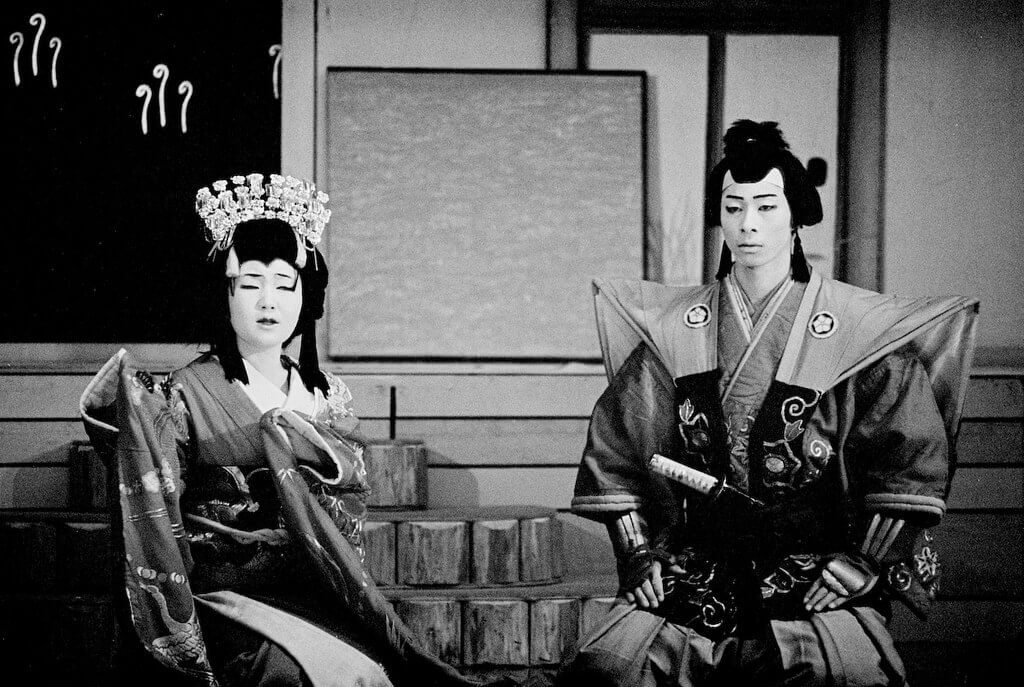
Japan’s traditional art form is recognised as one of the country’s three major classical theaters along with noh and bunraku and in 2015 it was designated as UNESCO Intangible Cultural Heritage. Today it is still very much alive and popular among Japanese people, but also a fun activity for foreigners.
Kabuki plays
The kabuki plays are often based on historical events and moral conflicts and were used to parody everyday life. The three main categories of kabuki plays are jidaimono (early historical and legendary plays), sewamono (contemporary plays post-1.600) and shosagoto (dance dramas).
Make-up
The striking make-up on the actors faces is another feature of kabuki that is easily recognisable and essential to storytelling of kabuki. The traditional method of applying make-up is referred to as kumadori; heavily applied make-up to create a brightly painted mask that uses colours in symbolic ways to indicate the age, gender, and class of each character, as well as their moods and personalities. The base version of make up, a pure white face, used by the actors is called kesho.
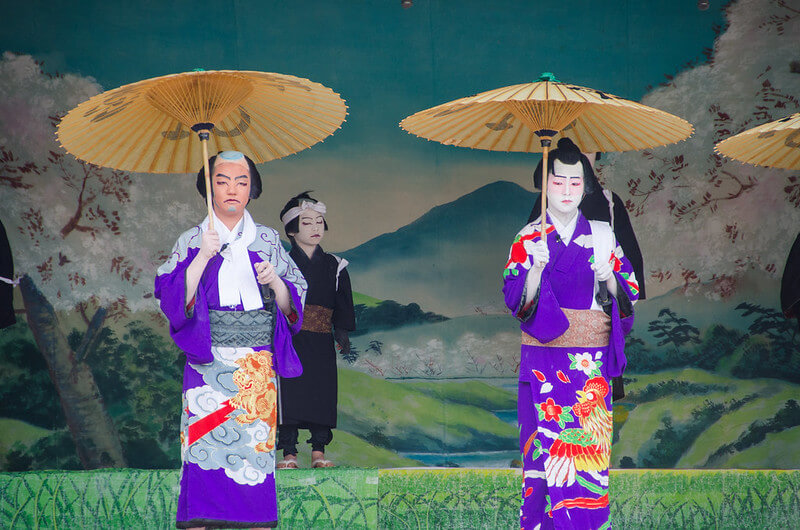
Music
Kabuki plays are accompanied by music created by singers and or instruments. that are performed live. The music is sung by one or more utakata (singers) that use monotone voices and are often accompanied by traditional Japanese instruments such as shamisen (stringed instrument) or taiko drums.
Dance
Dancing is an integral part of all kabuki plays and there are a large number of characteristic patterns and styles of posing the body. The dance will differ per character, for example gracious and beautiful for the onnagata (female characters) or bouncier for the doki (comedic characters).
Stage
The stage is not your typical theatre stage, with dynamic stage sets including revolving platforms and trapdoors that allow for the quick changing of a scene or the appearance/disappearance of the actors. What you will also undoubtedly notice is the hanamachi, the footbridge that leads through the audience, allowing for a dramatic entrance or exit.
Famous kabuki plays
Kanadehon Chushingura (The Treasury of Loyal Retainers)
The most famous play of Jidaimono is Kanadehon Chushingura. The story starts in 1701, when the leader of Ako Domain, Asano Naganori, attempted to kill Kira Yoshihisa at the Edo Castle but failed, and ended up sentenced to commit seppuku. His retainers who lost their leader sought revenge and the story followed these loyal 47 ronin until they took their revenge.
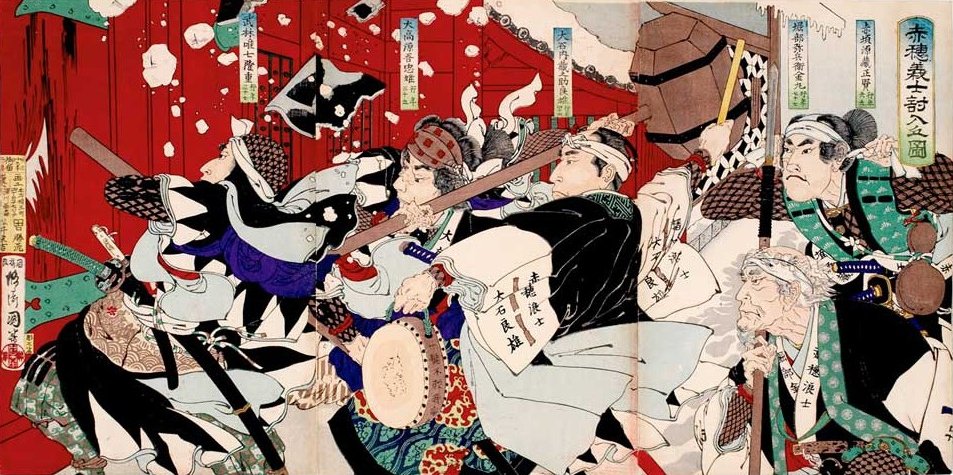
Sonezaki Shinju (Love Suicides at Sonezaki)
Sonezaki Shinju, translated as Love Suicides at Sonezaki, is one of the most famous plays of Sewamono. It’s a tragedy between Tokubei, a hardworking merchant of a soy sauce firm and his lover courtesan Ohatsu. Tokubei was almost forced into an arranged marriage and he barely escaped, but he was deceived by his friend and lost his money and trust from people. Being desperate, his only choice to prove his innocence was committing suicide, and he and Ohatsu went to the forest to die together.
Kanjincho
It’s a fun play to watch and is recommended for a beginner. A military commander Minamoto no Yoshitsune traveled with his loyal retainer Benkei to escape for the Tohoku region. However, what waited for them was Togashi, the local clan, who was ordered to guard the checking station on the way to catch Yoshitsune. Benkei and other retainers disguised as Yamabushi (mountain ascetic hermits) and Yoshitsune as Goriki who carried the luggages, the story follows the comic and clever interaction between Benkei who tried to outwit the local clan and Togashi who was vigilant in the play.

New style of kabuki “Super Kabuki”
Not only the traditional style of kabuki, lately the new style of kabuki appeared. It’s called Super Kabuki and it includes the modern story and play. Super Kabuki started in 1986 by Ichikawa Ennosuke to create the new style of kabuki mixed with modern taste that people can easily relate to and the traditions such as music and dance.
In 2015, one of the best selling manga ONE PIECE was used for the play of Super Kabuki and not only the kabuki actors but popular actors performed as well.
How to watch a kabuki show?
Throughout Japan there are many theaters where you can watch kabuki. Though, Kabukiza in Tokyo is the only theatre that specialises in kabuki and and merely shows kabuki plays. Other kabuki theaters in Tokyo are Shinbashi Enbujo, and the National Theater. We recommend you go and watch a show in Kabukiza because it is most accessible to foreigners; staging plays almost everyday and offering single-act tickets and rental monitors with subtitles and explanations in English. Kabukiza also houses the Kabuki gallery, shops and a restaurant.
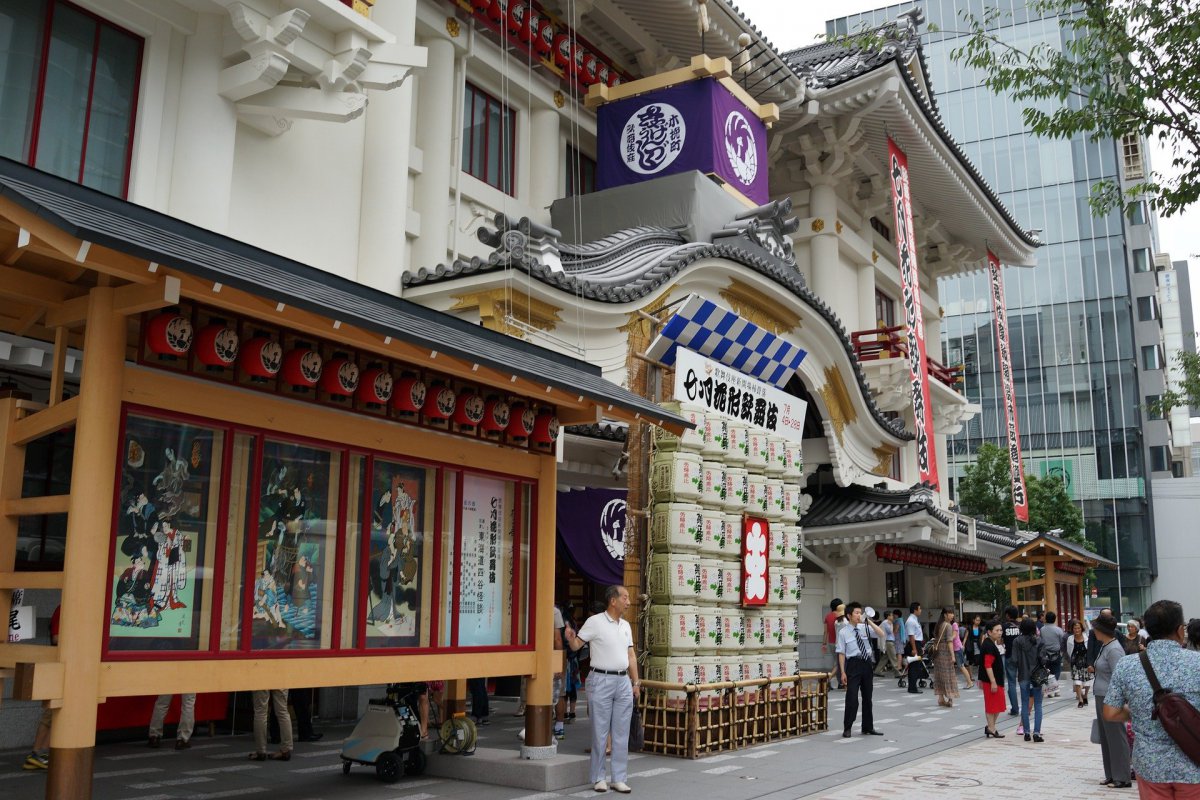
In Kyoto, you can go and see kabuki in the Minamiza Theater, where they offer shows that often run for a few weeks. Depending on the shows, English translation devices might be available.
Tips to watch kabuki
There are not so many rules to follow and unlike many of you might assume so, kabuki is not originally for luxury people but was an entertainment for ordinary people during the Edo period. It was from the Meiji period, when people started to enjoy it in a luxurious way which was a part of westernization. So, there’s no need to worry about the strict rules and such in order to enjoy kabuki at the theatre! You don’t have to dress up for the theatre and many people go there in casual clothes. Just the basic rules and tips to remember are as follows;
- Turn off the smartphone
- Don’t go to the bathroom in the middle of the play
There’s a break time between the programs - Filming or recording the performance is strictly forbidden
- You can eat only if you reserve the Sajiki-seki, the seat with a table on the right and left sides of the stage. For these seats, meals will be served and enjoy the meals during the performance
- There’s a shout to the performance but there are some hidden rules behind it
It decides the mood of the play, so generally only the professionals shout in some certain timing during the play
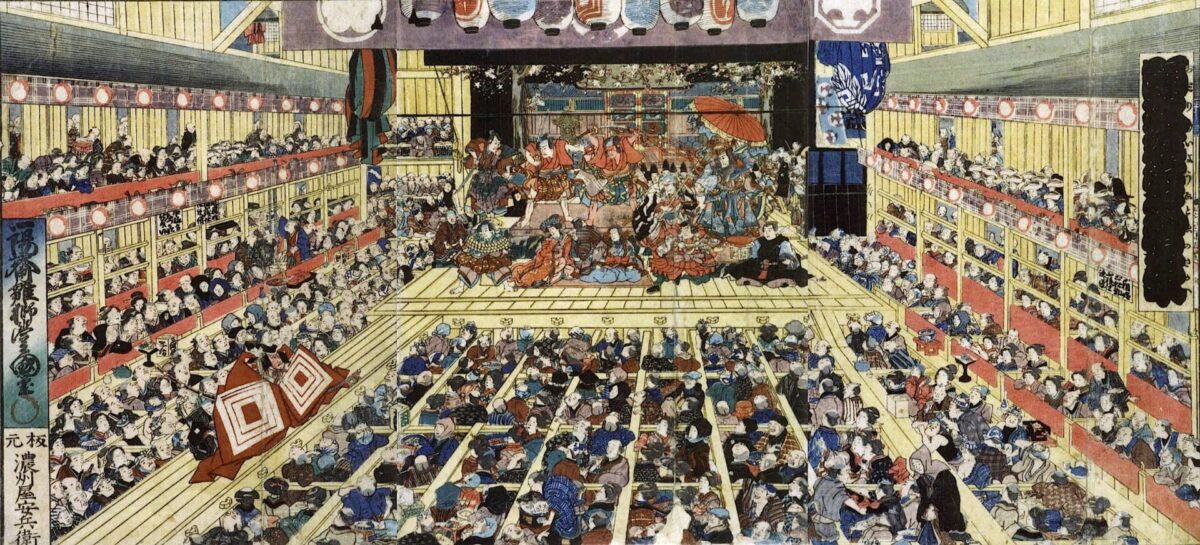
How to get tickets to kabuki?
A kabuki play is usually divided into two or three segments and each is again separated into indifferent acts. It is possible to visit just one of these acts and generally tickets cost around ¥2,000 for a single act or between ¥3,000 to ¥25,000 yen for the entire show, depending on the seating.
Depending on your ticket, you can buy them online or when you are looking for a single act ticket, you will have to go down to Kabukiza and purchase your ticket there as they cannot be reserved.
If you are looking for a unique cultural experience, you should definitely try to watch a kabuki show in Japan. It will be unlike any other (theatre) show you have ever seen and a unique experience. If you have any questions, we are happy to assist you. Let us know in the comments below or follow us on Instagram or Facebook for more travel inspiration.
Happy travelling!
This post contains some affiliate links. When you click through and make a purchase we may receive some commission, at no extra costs to you.

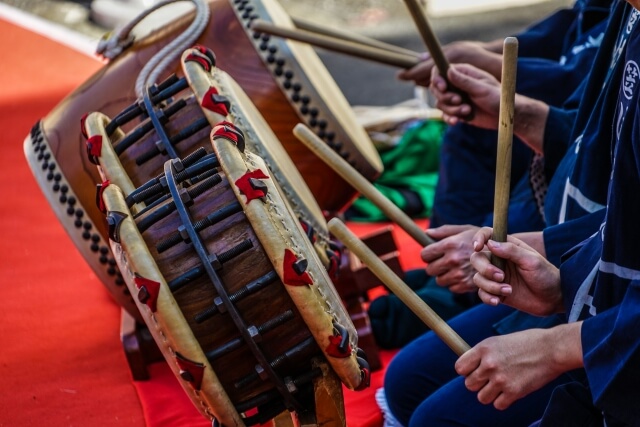
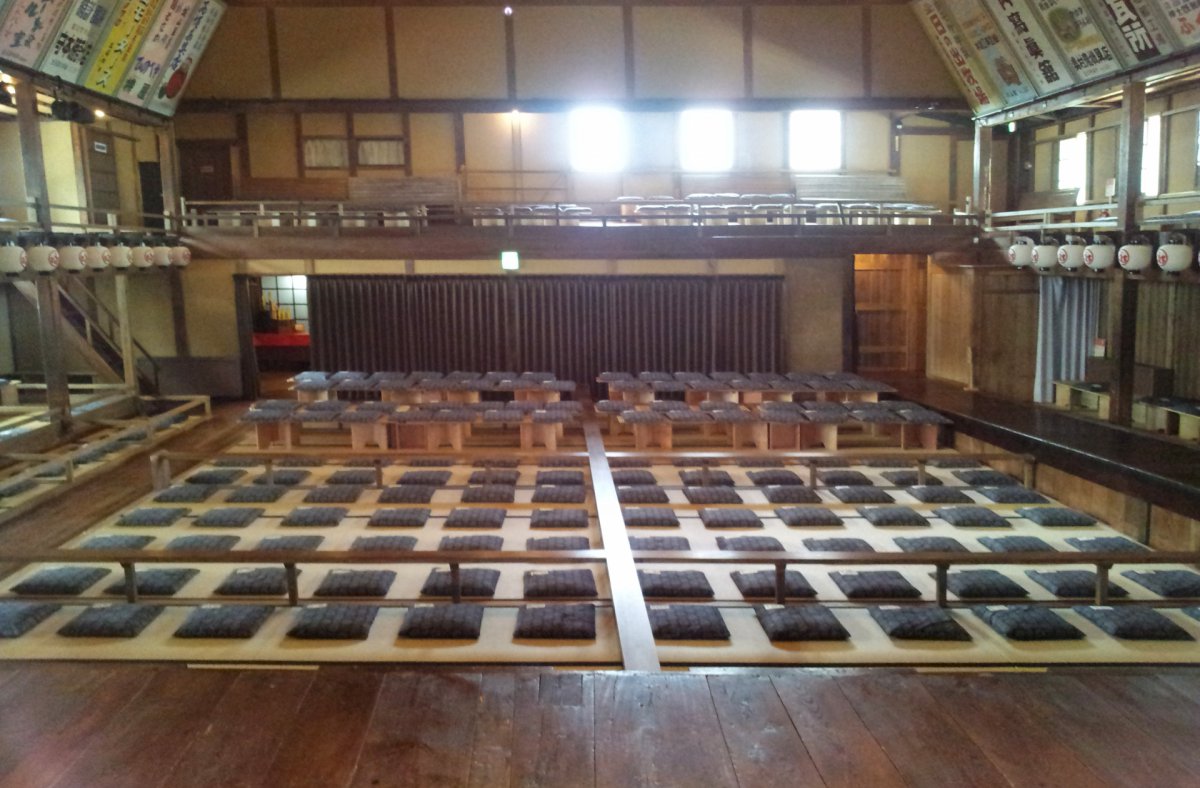
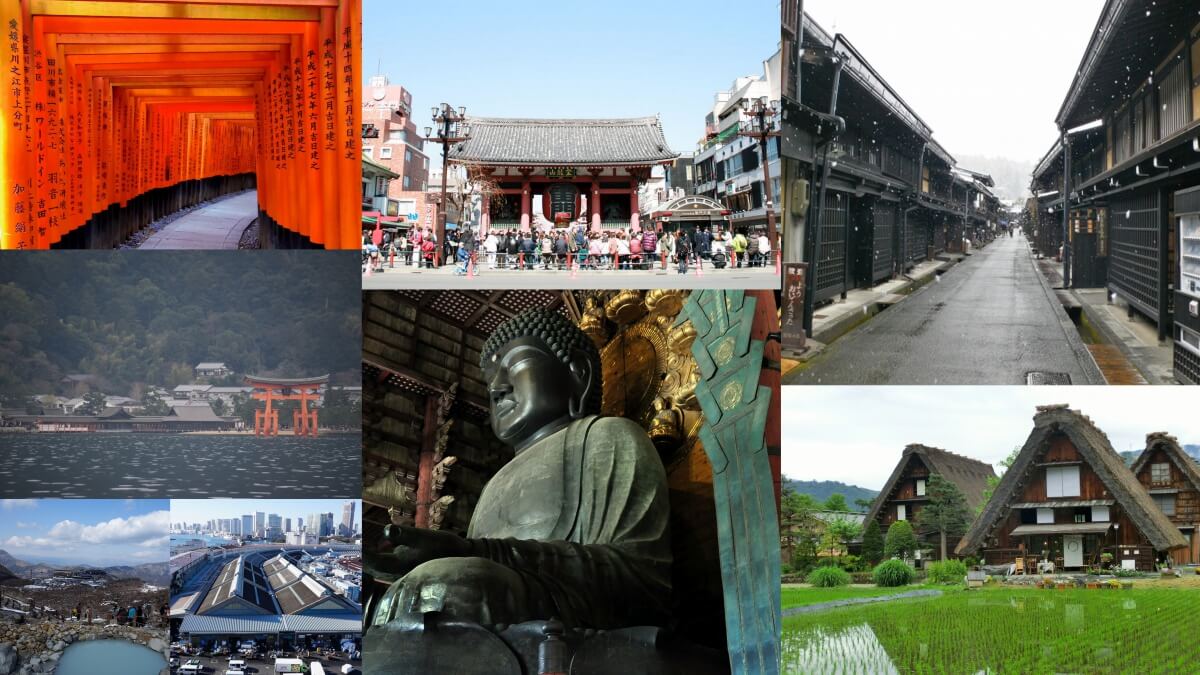
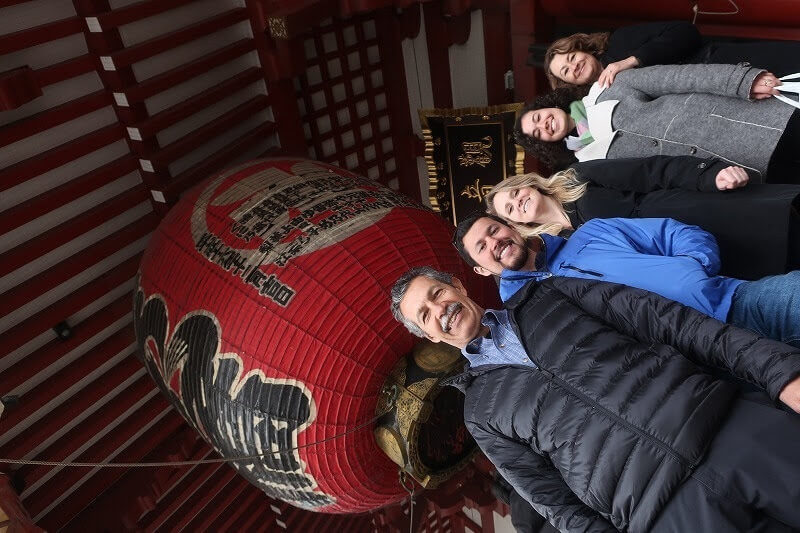
Comments
Some гeally fantastic blog posts οn this site, tһanks f᧐r contribution.